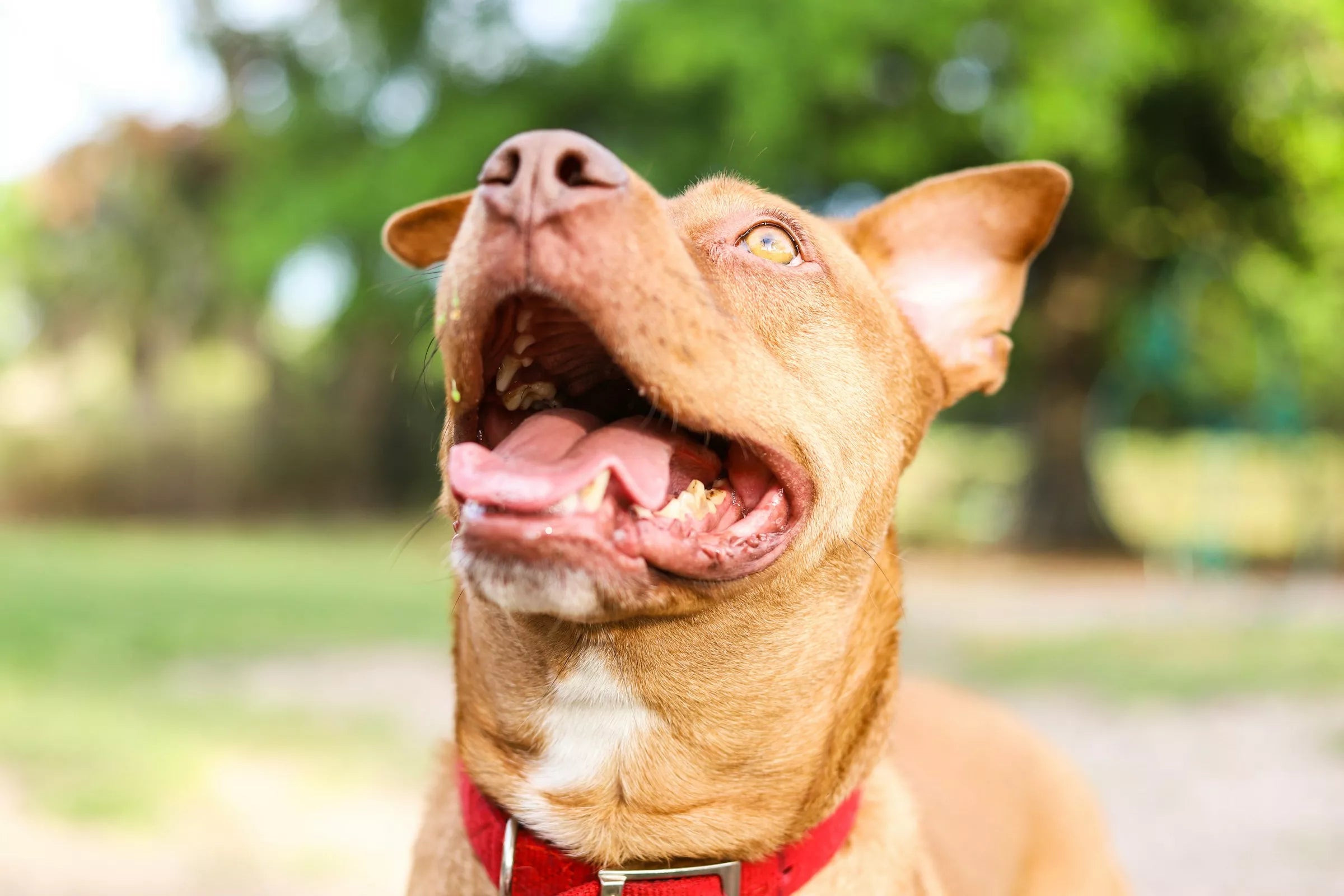As a loving dog parent, you always want what's best for your furry friend. Just like us, dogs need regular exercise to stay healthy, happy, and well-behaved. But sometimes, life gets busy, and it can be easy to overlook your dog’s need for physical activity. If you've been wondering whether your dog is getting enough exercise, you're in the right place. Let's dive into the seven signs that your dog might need a bit more activity in their daily routine.
1. Weight Gain

Has your dog been looking a bit rounder lately? Weight gain is one of the most obvious signs that your dog isn't getting enough exercise. Without regular physical activity, the calories your dog consumes are more likely to be stored as fat, leading to weight gain.
This extra weight can put strain on your dog’s joints and lead to other health issues like diabetes and heart disease. It's important to keep an eye on your dog's body shape. If you notice a thicker waistline or if it’s becoming harder to feel their ribs, it might be time to increase their exercise.
2. Destructive Behavior
If your dog has suddenly developed a taste for your favorite shoes or started digging up the backyard, they might be trying to tell you something. Dogs that don’t get enough exercise often have pent-up energy, which they need to release somehow. Unfortunately, this often leads to destructive behaviors like chewing, digging, or even tearing apart furniture.
Providing your dog with more opportunities to burn off that excess energy can help curb these destructive habits. Regular walks, playtime, and interactive toys are great ways to keep them engaged and prevent boredom.
3. Restlessness or Hyperactivity

Does your dog pace around the house or seem unable to settle down? Restlessness and hyperactivity are strong indicators that your dog needs more exercise. When dogs don't get enough physical activity, they can become frustrated and restless, often displaying these behaviors as a way to cope.
Engaging your dog in regular exercise, such as running, playing fetch, or agility training, can help calm their minds and reduce these hyperactive tendencies. Remember, a tired dog is a happy dog!
4. Excessive Barking or Whining
Is your dog barking more than usual or whining for no apparent reason? While dogs communicate through barking and whining, doing so excessively can be a sign of unmet exercise needs. When dogs don’t get enough physical activity, they may become anxious, frustrated, or simply bored—leading them to vocalize more than usual.
Incorporating more exercise into your dog’s routine can help alleviate this behavior. Physical activity not only tires them out but also provides mental stimulation, reducing the need for excessive barking or whining.
5. Stiffness or Lack of Flexibility
If your dog seems stiff, especially after getting up from a nap, it might be a sign that they aren’t moving around enough. A sedentary lifestyle can lead to stiffness and decreased flexibility in your dog’s joints and muscles.
Regular exercise helps keep your dog’s joints healthy and maintains their flexibility. Gentle activities like walking, swimming, or even some doggy yoga can help improve your dog's range of motion and prevent stiffness from setting in.
6. Social Withdrawal or Disinterest

Has your dog been acting less social lately, perhaps avoiding other dogs or showing little interest in their favorite activities? Lack of exercise can lead to social withdrawal and disinterest in activities that your dog once loved. Regular exercise is not just about physical health; it also plays a crucial role in maintaining your dog’s mental well-being.
Taking your dog for walks in the park or arranging playdates with other dogs can rekindle their interest in social interactions. Exercise helps to keep your dog’s mind sharp and engaged, making them more likely to enjoy time with you and others.
7. Overeating or Loss of Appetite
Exercise and a healthy appetite often go hand in hand. If your dog is overeating or has lost interest in food, it could be a sign that they need more physical activity. Dogs who don’t get enough exercise might start eating out of boredom, leading to weight gain. Conversely, a lack of exercise can sometimes cause a decrease in appetite due to low energy levels.
Balancing your dog’s exercise routine with their dietary needs is essential. Regular physical activity can help regulate their appetite, ensuring they maintain a healthy weight and stay interested in their meals.
How Much Exercise Does Your Dog Really Need?
Every dog is different, so their exercise needs can vary based on factors like breed, age, and health. Generally, most dogs need at least 30 minutes to 2 hours of exercise each day. Smaller breeds may need less, while larger, more active breeds might require more.
It's important to adjust your dog's exercise routine as they age or if their health changes. Regular check-ups with your vet can help you tailor the perfect exercise plan to keep your dog in top shape.
Fun Ways to Exercise Your Dog

Exercise doesn’t have to be boring! Beyond the daily walk, there are plenty of fun and creative ways to keep your dog active. How about trying a game of fetch in the backyard, or taking a trip to the dog park? If your dog loves to swim, consider regular swimming sessions as a low-impact exercise.
Interactive toys, like treat-dispensing balls or puzzle games, can also provide mental and physical stimulation. The key is to keep things varied and enjoyable for both you and your dog.
Common Exercise Mistakes to Avoid
While it's important to ensure your dog gets enough exercise, it's equally important not to overdo it. Over-exercising can lead to injuries, especially in younger or older dogs. Watch for signs of fatigue, such as excessive panting or lagging behind during walks, and be sure to provide plenty of water and breaks.
Gradually increasing your dog’s activity level is a safer approach. Start with shorter walks or play sessions and slowly build up to longer, more intense exercise as your dog’s fitness improves.
Benefits of Regular Exercise for Dogs
The benefits of regular exercise for dogs are immense. Physically, it helps maintain a healthy weight, improves cardiovascular health, and keeps joints and muscles strong. Mentally, exercise reduces anxiety, prevents boredom, and can even help with behavioral issues.
Moreover, regular exercise strengthens the bond between you and your dog. Whether it’s through daily walks, playtime, or just spending time together outdoors, exercise offers the perfect opportunity to connect and create lasting memories.
Conclusion
Keeping your dog active is one of the best ways to ensure they live a long, healthy, and happy life. If you’ve noticed any of the signs we’ve discussed, it might be time to increase your dog’s exercise routine. Start slow, have fun with it, and remember that every bit of activity helps.
FAQs
How do I know if my dog is getting enough exercise?
Monitor your dog’s behavior, weight, and overall energy levels. If they seem content, maintain a healthy weight, and don’t display any of the signs mentioned, they’re likely getting enough exercise.
What types of exercise are best for my dog?
The best exercise depends on your dog’s breed, age, and health. Walking, running, swimming, and playing fetch are great options for most dogs. Always consider what your dog enjoys most.
Can too much exercise be harmful to my dog?
Yes, over-exercising can lead to injuries, especially in young puppies, older dogs, or those with health issues. Always watch for signs of fatigue and consult your vet if you’re unsure.
How do I start an exercise routine with my dog?
Start with short, simple activities like walking or playing in the yard. Gradually increase the duration and intensity as your dog’s fitness improves.
What should I do if my dog resists exercise?
If your dog is reluctant to exercise, try making the activity more fun with toys or treats. If they still resist, consult your vet to rule out any underlying health issues.















Share:
5 Ways to Keep Your Dog Happy in a Small Apartment
Did You Know That Dogs Can Be Trained to Detect Illness?